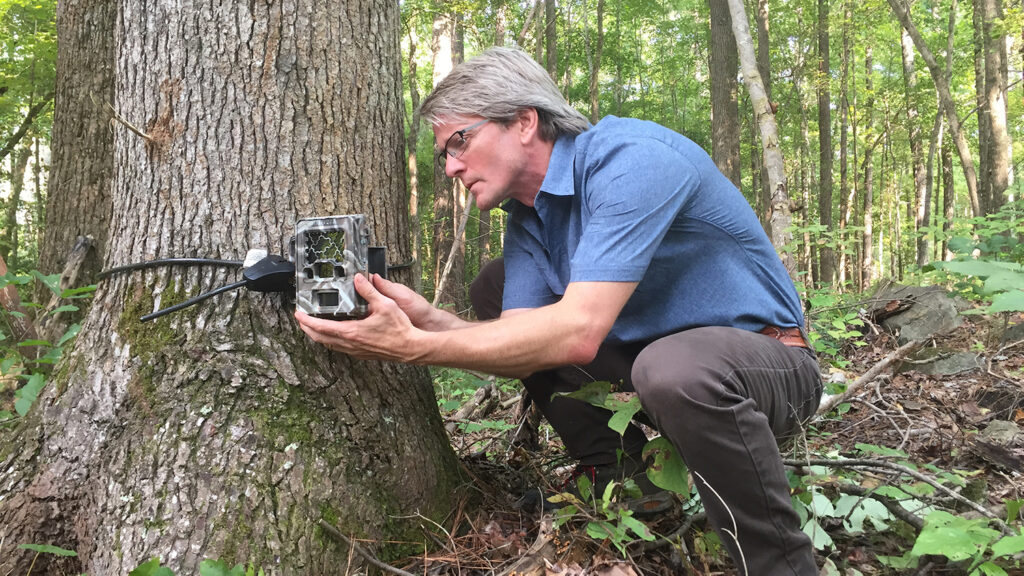Professor’s Podcast Explores the Wild Side of Animal Tracking
Scientists around the world are using GPS and related technologies to track and monitor animals as they move through natural and urban areas. It’s a research method that’s not only produced incredible discoveries about animal behavior, but also some entertaining stories about the lives of animals in the wild.
In each episode of his podcast, “Wild Animals,” NC State research professor Roland Kays shares some of these stories as he talks with scientists about individual animals that they’ve gotten to know through the process of following their movements.
“The idea is to share the drama and excitement that happens out in nature all the time but rarely gets seen by people,” Kays said. “Tracking animals gives us a new way to learn about this drama, and it’s fun to share it with others.”
Kays, who is also director of the Biodiversity Lab at the North Carolina Museum of Natural Sciences, launched the podcast in 2019 after reflecting on his own experiences with individual animals over the course of his career.
As an expert in using technology to track wildlife, Kays has traversed the globe to study the movements of animals. He’s also led the creation of tools like Movebank to streamline the data management processes of wildlife monitoring.

“In my own work tracking animals, I have met a lot of interesting characters. And by chatting with my colleagues, I realized they have too,” Kays said. “Animal tracking provides a unique way to learn about wildlife, and the podcast format is a great way to allow people to share these stories.”
Since launching the podcast, Kays has completed two seasons worth of interviews — more than 25 episodes to be exact. He’s currently in the middle of the third season and releasing episodes on a weekly basis.
Guests have so far discussed a wide range of animals, from mammals to reptiles to birds. In the second season, Katie Rubin of the University of Alaska Fairbanks shared her story of John Snow, a hoary marmot that died and came back to life. And more recently, Eli Strauss of the Max Planck Institute for Animal Behavior shared his story of Waffles, a spotted hyena that rose through the ranks of her clan to become queen.
Ultimately, Kays said he hopes listeners not only enjoy the stories of these animals but that they also learn something about the species and the research surrounding them.
“The main goal is to share a good story about a particular animal that led an interesting life. But in the process we also get to learn about the species in general and about the research that is underway, including some of the excitement of doing fieldwork with animals in wild places,” Kays said.
This post was originally published in College of Natural Resources News.
- Categories:


